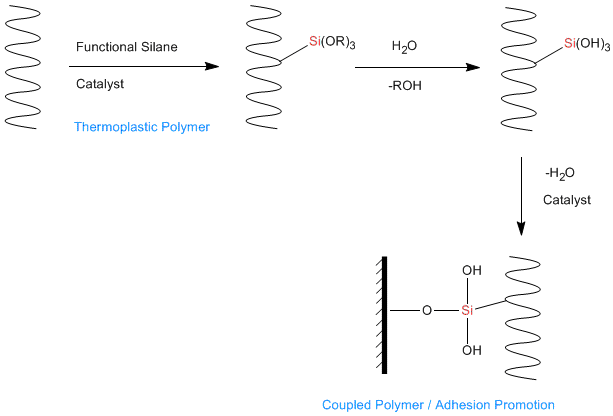Silane adhesion promoters are bifunctional organosilicone compounds which act as molecular bridges between the polymer matrix of an adhesive or sealant and the substrate, either inorganic or organic. Silanes are very effective at improving adhesion between inorganic substrates such as metal and glass, and organic polymers (binders).
The silane end contains hydrolysable alkoxy groups that are activated by reaction with ambient moisture. The hydrolysable alkoxy groups attached to the silicon end of the silane are typically either methoxy or ethoxy. Once activated (hydrolyzed), the resultant silanol groups will condense with other silanols or with reactive groups on the surface of a substrate such as SiOH, AIOH, or other metal oxides or hydroxides. Usually methoxysilanes hydrolyze faster than ethoxysilanes. Aminofunctional silanes are self-catalyzing, while other functional silanes require a small amount of acid to initiate hydrolysis. The silane’s ability to bond to a surface will generally be determined by the concentration of such sites on the surface.Selecting the optimal silane for an application requires matching the reactivity of the silane‘s organofunctional group to that of the polymer. |



